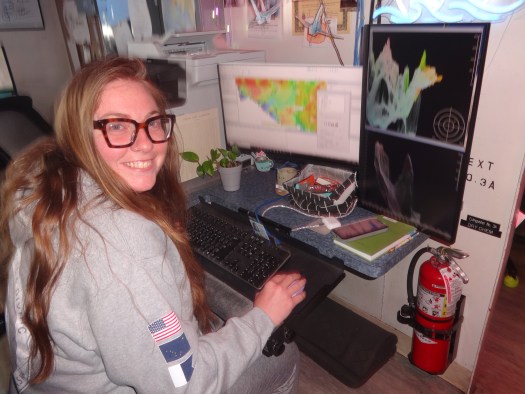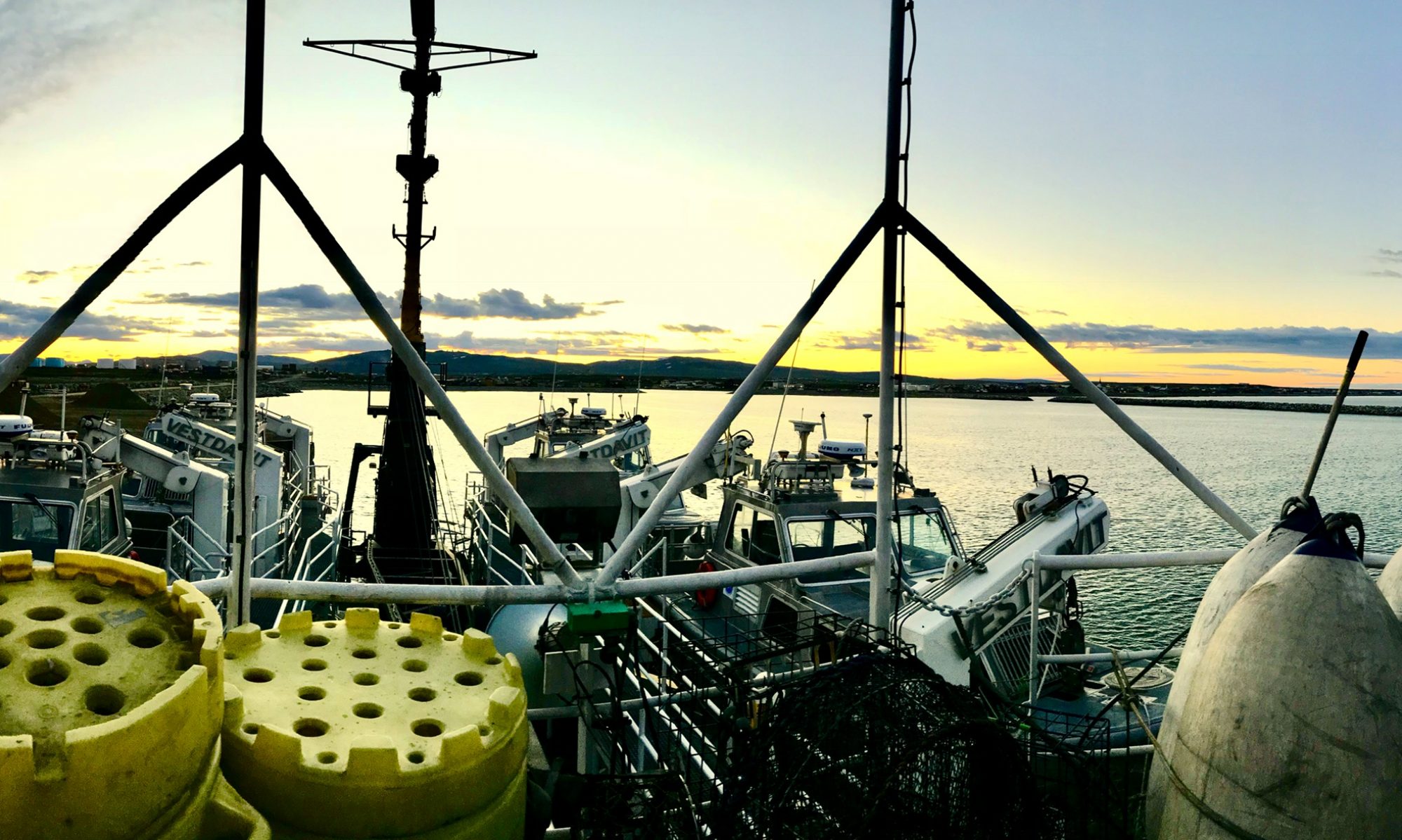NOAA Teacher at Sea
Elli Simonen (she/her)
Aboard NOAA Ship Fairweather
July 10-28, 2023
Mission: Hydrographic Survey of the Pribilof Islands
Geographic Area of Cruise: Pribilof Islands, Alaska
Date: July 27, 2023
Weather Data
Location: 55°54.11’N, 168°33.69W
Outside temperature: 11°C
Water temperature: 10.5°C
True Winds: 8nm, 211.9°
Skies: Overcast and Foggy
Visibility: 5nm
Sea Wave: 1 ft
Swell Wave: 2 ft
Science and Technology Log
The entire survey department has diverse backgrounds rooted in Science and each took different paths before coming to NOAA Ship Fairweather. Their studies in college include Geography, Quantitative Geoscience, Environmental Science, Economic Environmental Policy, Space Studies, Physical Oceanology, Applied Math, Computer Science and Marine Biology.
I wanted to highlight two people in the survey department who I worked with over the last 3 weeks.
Alex Dawson, Physical Scientist, Project Manager for the Pribilof Islands
Alex studied in one of the only hydrographic programs in the U.S. for undergraduates, at the College of Charleston. This is a unique program where students gain technical, practical and research knowledge and experience. Alex obtained bathymetric data and translated this into a research project. She presented this information at a professional conference, which put her ahead of many of her peers.
In her current job at NOAA headquarters in Silver Spring, Maryland, Alex is a Physical Scientist and a Project Manager. She plans projects for the entire U.S. Exclusive Economic Zone (EEZ) and planned this Hydrographic Survey of the Pribilof Islands; she is aboard NOAA Ship Fairweather for their Pribilof Island Surveys . Each project takes about 2 to 6 months to plan depending on the complexity of the specific area being surveyed. Alex and her team do this by looking at the environment of the area, known features and existing charts. She develops environmental compliance best management practices so the survey does not impact the local ecosystem or marine life. Any features that are on existing charts such as obstructions, shipwrecks, rocks, or pipelines will be included in the project’s GIS files, and she determines if those features need to be investigated more thoroughly. This is all put together in a project package that is sent to the hydrographic ship– the footprint of the survey, any special features that need to be investigated, environmental compliance information, and any previous surveys in the last 20 years that may abut or overlap the planned survey area. Alex also does hurricane response work; if a hurricane hits a port, then the port will be closed until a federal hydrographic survey comes in to make sure it is safe for commerce. This is done as fast as possible, sometimes within 24 hours.
Which projects get fulfilled depends on the navigational risks of each area. Alex explains: “Coast Survey determines which areas to survey within U.S. ports, harbors, and approaches, as well as U.S. waters more broadly, by using the risk-based Hydrographic Health Model. The model assesses risks to surface navigation from charted bathymetry and features, including both the likelihood of a risk (e.g. traffic density, known hazards to navigation, reported ship groundings, etc.) and the consequence of a risk (e.g. proximity to search and rescue stations, proximity to public beaches, reefs, or marine sanctuaries, etc.). A resulting accuracy factor indicates the urgency (or lack thereof) for new hydrographic surveys.”
In Alex’s own words:
“I love mapping in general, but I think it’s really cool to map in an area such as the Pribilofs… to uncover what hasn’t been uncovered before – mapping where no one has mapped before.”

Sara Ober, Hydrographic Survey Technician
Sara got her B.S. in Marine Biology from Texas A & M University. After college, she worked for 5 years in Alaska as a fisheries observer contracted through NOAA through the North Pacific Observer Program. She worked on smaller fishing boats to observe what they were catching and when. The calendar of the fishing seasons and quotas in Alaskan waters are mostly federally managed and she would observe the catch at the beginning, close and during the season and pass on that data to the Alaska Fisheries Science Center in Seattle.
Sara then became a survey technician with NOAA. At the time, hydrography was new to Sara, but she is currently in her second year and likes training newer survey technicians on how to precisely look at the data and check for accuracy. Every morning she makes sure everything is ready for the plan of the day in terms of surveying, ensures the processing from the night before is ready and addresses anything if needed. She likes helping others learn and members of the survey team often go to her for advice.
In the future, Sara is hoping to combine her marine biology and hydrography experiences together and do benthic habitat map work. The benthic zone is the ecological region found at the bottom of a body of water. Sara would like to use sonar data to see what the seafloor looks like and why fish live there, as well as predict where they migrate to.
In Sara’s own words:
“I really like hydrography, the technical part is fun and new to me. I wasn’t expecting to like it as much as I do. Being able to visually see something is very cool to me and having such an impact on things. We can see our direct impact when we submit our data and later on when nautical charts get updated. It’s like, this is what I did and here’s the final product.
I love being in Alaska. I like working on a ship, I think it’s fun.”

Personal Log
We will be arriving at port tomorrow in Dutch Harbor and my time on NOAA Ship Fairweather is coming to a close. I want to thank the entire crew for showing and explaining to me the amazing work they do and making me feel at home. The crew is highly skilled, patient, respectful and willing to pretty much do anything to help the mission. Their commitment to Science, to NOAA and to each other is commendable.
I especially want to thank LT Taylor Krabiel and Commanding Officer CMD Meghan McGovern for their hospitality, guidance, continuous check-ins, and making the most of my time.
















































































































































